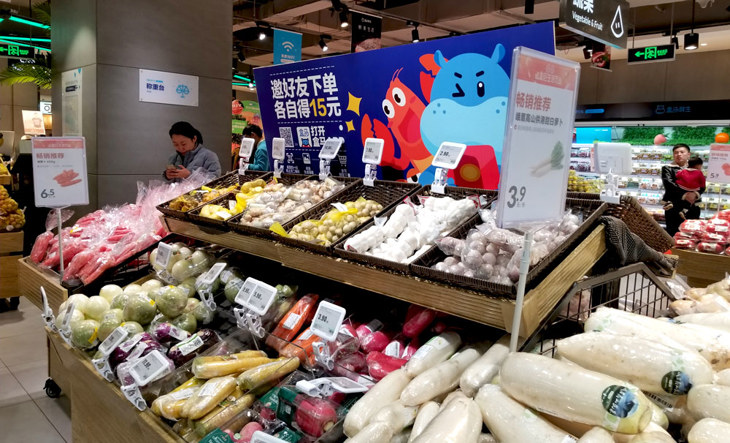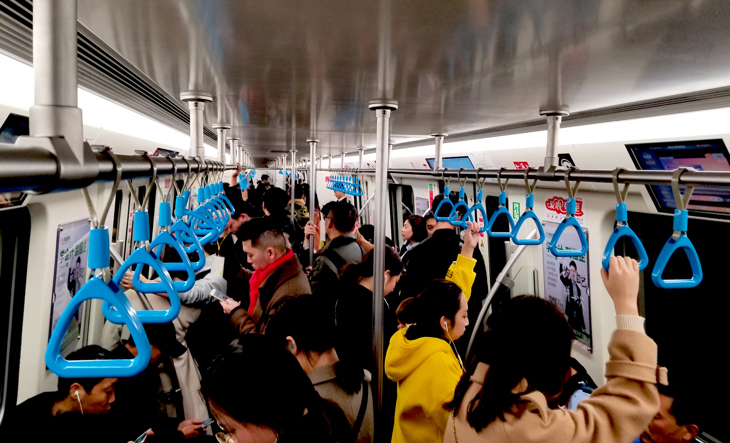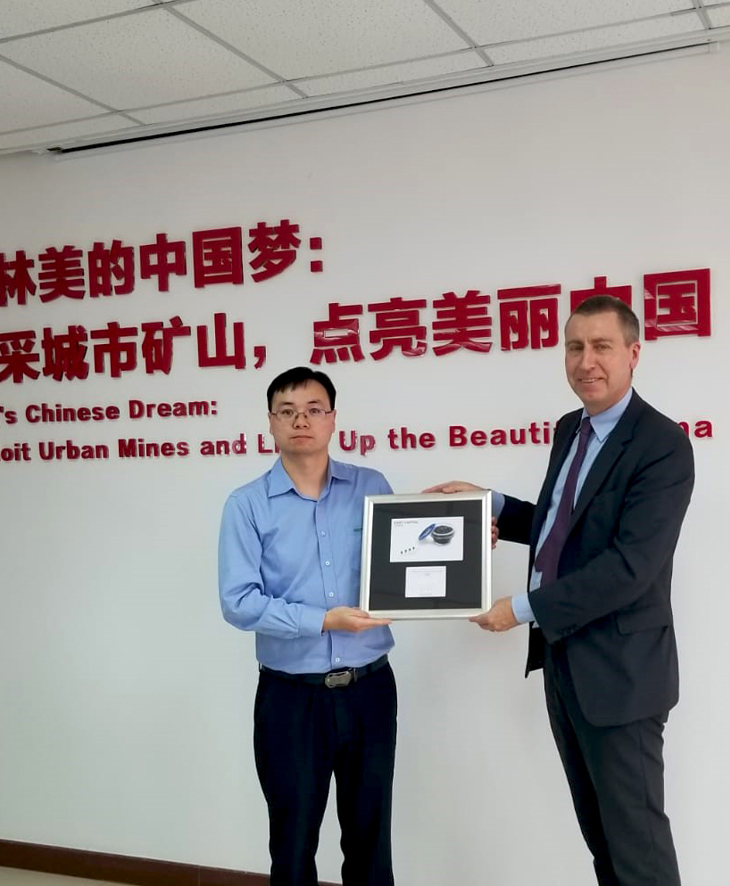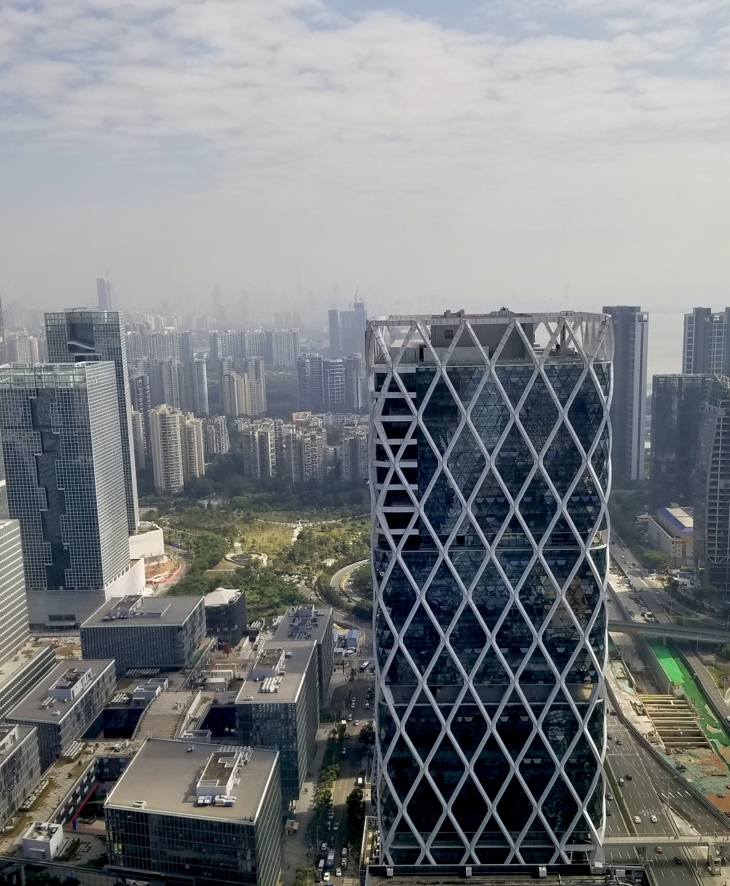Off the beaten track
The need to visit companies in order to keep track on changes and trends has been a cornerstone of our investment philosophy in emerging and frontier markets since 1997, because these markets in transition imply fast-changing business environments, which are not easy to navigate for investors. A few times a year we invite our clients to join us in order to better understand both the investment case and the way we work. At the end of 2018, it was the time again to embark on a trip off the beaten track in China.
When people have travelled to China – if they have – it is usually Beijing, Shanghai or Hong Kong they have experienced so we prefer to take our clients to cities they have never been to and often never even heard about.
We started in Chengdu, the provincial capital of Sichuan and a city of more than 10 million people. It is one of the most important economic, financial and commercial centres of South-western China and a key location for the “Belt and Road Initiative” policy. It is also home to several cutting-edge companies and logistics hubs. Our first visit was to the Shenzhen-listed Sichuan Kelun Pharmaceutical, which dominates the liquid injection market in China after having acquired and consolidated several smaller players, and thanks to its strong growth profile (+56% EPS growth in 2018). In this industry, it is winner-takes-all which matters to face strict compliance to environmental regulation and steep price competition. The Cosmos residential and hotel project developed by Hong-Kong listed real estate company KWG Group was our next visit; and we got to understand better what lies behind KWG’s robust 66% growth in contracted sales and one of the highest margins among property developers in China (24% net margin), during a period which otherwise remains quite muted for the sector. KWG has an attractive land bank, reaching 15 million square meters in 31 tier one and tier two cities. We ended the day at Shanghai-listed Sichuan Swellfun, where we all got to taste the high-end baijiu, the Chinese white spirit with 2,000 history. My trip to Guiyang province earlier this year, where I visited the Kwechow Moutai’s facilities in April, have got me to understand and appreciate better the white liquor with a unique place in Chinese culture and history. Swellfun has been investing heavily in brand building, and gains market share through innovative retail-oriented distribution models.
Our second day in Chengdu started with an internal seminar where we presented our portfolios and explained the way we work with our strategies including how we integrate ESG analysis in our investment processes. Following the seminar we visited the impressive production facility of BOE Technology, another Shenzhen-listed name, which is the largest semiconductor display company in the world. Basically, every fourth phone and every fifth laptop in the world has BOE components. The Chengdu factory specialises in flex AMOLED. It is China’s first and the world’s second factory where this technology is used in mass production. No workers were to be seen in this state-of-the-art facility which is fully automatic; the only human beings we saw working around in protective gears were a few engineers and representatives of vendors.
On our way to a famous local Sichuanese restaurant in the famous Gulou South Street, where we enjoyed the traditional hotpot and a dazzling display of face mask changing art, we stopped by at Hema, a newly launched supermarket concept which could well be what all supermarkets will look like in the future. The “New retail” format developed by Alibaba uses technology and data to merge online and offline shopping and enhance the consumer experience. We walked around the store, scanning the products’ bar codes with our mobile phones, to find out more and then order them. The goods get picked up by staff and transported to the dispatch area by conveyor belt hanging from the ceiling and 30 minutes later you get home delivery. All of this is of course cash-free.

Following dinner, the most adventurous of us took the opportunity to continue to he New Century Global Center which is the world’s largest building in terms of floor area with 1.7 million sqm of shopping area, university complex, hotels, IMAX cinema, skating rink and a water park with a 5,000 square meters artificial beach. There were too many people waiting a car on their DiDi Chuxing app outside of the gigantic building, so instead we took the Chengdu metro, conveniently paying tickets with wepay, the mobile payment solution of Tencent.

Despite the 4.30am wake-up on day 3 to make sure we will catch the first flight and limit the risks of flight delays the whole group was in a good mood to fly south-east to Shenzhen. The airport terminal, in Shenzhen, itself is another amazing construction, very symbolic of the transformation in four decades of a small fishing town to a 20 million people megalopolis and a global powerhouse of innovation and technology.
Our first visit was to GEM Co, another A-share company that has managed to establish itself as a leader in its industry. GEM Co is the largest used battery recycling company in the world and specialises in the production of cobalt, nickel and tungsten rare metals. EV business is booming in China and it is good to see companies finding new business in recycling all the batteries and extracting rare metals. The company is also the world’s largest producer of ultra-fine cobalt power, that it primarily sources from scrap metals and batteries recycling. Cobalt recycling has become a critical source of cobalt as it reduces China’s reliance on imports. China accounts for more than 50% of cobalt refining demand but has only 1% of cobalt reserves. Benefiting from tailwinds such as the strong governmental support to environmental protection sector and the booming EV business, the company keeps a high-growth profile; revenues and net profits were up 41% and 34% respectively for the first 9 months of the year. GEM Co is also the recipient of East Capital Award Discovery of the Year 2018, so we took the opportunity to hand over the prize in person.


Han’s Laser, which has 40% global market share in low-power marking equipment, was our next stop. The company representative showed us through the very interesting showroom outlining the various laser techniques before a presentation of the business and Q&A session. The company’s business is highly dependent on Apple, a good thing in years when Apple comes with new best-selling products but clearly also a factor of vulnerability in times of global trade tensions. Han’s Laser has so far managed well in finding and growing new businesses, such as OEM business for EVs, which doubled to RMB 1bn in 2018 and the PCB business.
Our third visit for the day was yet another national leader, this time in aluminium laminated films. Shenzhen Selen Science & Tech with a 133% EPS growth for 2018 is a small cap listed in Shenzhen which is also a key supplier in Apple’s supply chain and growing fast alongside the boom of NEV market in China. It has recently invested in optoelectronic material production facility by partnering with overseas players from Japan. We joined a group session with other local investors who seemed to find our questions more insightful and long-term than what they were used to asking.
Tencent’s brand new headquarters were an excitement by themselves. Once we managed the hurdle of facial recognition-based sign-in procedure, we got a thorough review of China’s number one online game and social media company’s current state of affairs, business outlook as well as their intense M&A activity. Questions on corporate governance, financial services, mini-programs, Cloud business, future IPO of Tencent Music and regulatory headwinds this year led to thought-provoking discussion with one of the company representatives and our group afterwards.
Our last meeting was with S.F. Holding, listed in Shenzhen since 2016 and which operates a network of premium express delivery services. The parcel volume business is growing by 24% on average per year, and even if we expect it to start moderating, a company like S.F. Holding will gain through consolidation play (they just announced their acquisition of DHL supply chain’s operation in China, HK and Macau) and through better cost control as their direct model enables them to control each step of the delivery. Only 20% of their business is e-commerce related and we got a good insight in their competitive advantages, sustainability efforts and future market opportunities. Before heading to Hong Kong our last stop in Shenzhen was the Ping An Finance Center, a 115-storey supertall skyscraper, the fourth tallest building in the world. From the observation deck at 550 meters we got a stunning view over the city celebrating the 40th year anniversary of the reforms and spotted the neighbouring, but much lower, Shenzhen Stock Exchange building.



